Here’s something new for me. Until my recently acquired GlaStar, I have never owned an airplane without an adjustable propeller. True, the Pulsar XP’s two-blade, all-wood GSC was technically fixed pitch, but it was ground adjustable. Funny thing is that I remember setting it to the recommendations of Aero Designs, maker of the Pulsar kit, then maybe tweaking it once or twice, and leaving well enough alone. (And I’ll admit that the first time I set the pitch I didn’t get each blade exactly the same; the buzz from up front was attention-getting.) Anyway, as it turns out, Aero Designs had done their homework.
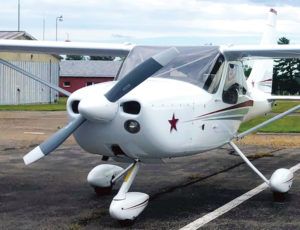
So here I am with the GlaStar and its Aymar-DeMuth fixed-pitch wood prop. The more time I spend with this airplane, the more I appreciate the singular mindset of the builder. He wanted it simple and light. Period. There’s absolutely nothing wrong with that if you accept the functional limitations that go with this approach. You build and get a no-nonsense airplane destined for VFR/day operations (which, to be fair, is probably the majority of our flying, collectively) but limited beyond that scope. Now that I’m living in the Pacific Northwest’s gloomy but largely flyable winter, those VFR-only limitations are starting to chafe.
I intend to be nipping away at Charlie Echo’s austerity a bit at a time. Truly, though, the prop isn’t necessarily the place to start, but I’d sat in on the Sensenich press conference at AirVenture and was excited by the prospect of new versions of the company’s established carbon-fiber, ground-adjustable prop. (You’ll see one already in use on this month’s cover airplane, the Titan IO-340-powered Arion Lightning.)
Sensenich has newer airfoils for this line of props, and has recently changed manufacturing techniques on the prop blades, switching from a bladder-molded process to a foam core. This is a move intended to improve production efficiencies but will result in little to no increase in blade weight. As before, the Sensenich carbon prop has integral leading-edge protection and can be trimmed for specific performance targets.
On my GlaStar, we’re starting with a 74-inch propeller, the company’s recommendation for the 150-hp Lycoming on board. The nice thing about the Sensenich prop is that it has some headroom should—heaven forfend!—I find myself wanting or needing to swap the Lycoming’s top end for a higher-compression set and go to 160 hp. Because, you know, horsepower.

I also intend to explore some airframe cleanup over the next spring and summer’s flying season. The previous owner had purchased but not installed various fairings—wing-to-strut, strut-to-fuselage, landing gear and wheel pant—that I’ll be adding to the airplane and testing. I can also see room for improvement in the GlaStar’s cowling, so I might be making changes that affect cooling drag.
Yes, I have a “tinkering” problem.
Of course, when you reduce drag, you change the optimum blade angle for a fixed-pitch prop. I’d made a few aero cleanups on my previous Sportsman, but the constant-speed prop took care of the rest. The interrelations are still there, just now, with a fixed-pitch prop, they’re not so blissfully transparent.
I’m eager to try for myself Sensenich’s innovative pitch-setting system that looks like it’ll remove the “pilot error” from blade adjustments. Moreover, I’m hopeful to find a better balance of performance than I currently have, which appears to favor climb rate over cruise speed. (Of course, I could find out that the compromise is already “just right.”)
The final piece of the puzzle here will be to upgrade the GlaStar’s engine instruments so I can accurately measure power and temperatures. That’s the only way to truly tell if prop changes are moving performance in the right direction. Static rpm is just one parameter to consider, and without being able to monitor manifold pressure and fuel flow in addition to engine speed (as I have now), it’ll be hard to get a read on how much the engine is loaded and how it reacts to the changes temperature-wise. The last time I did prop comparisons, it was hugely helpful to have comprehensive data to back up the subjective impressions.
All of this is, of course, just off in the future. Sensenich had a brief delay in building the prop in order to thoroughly test the new production methods, so all I can do is keep an eager ear out for the UPS guy toting a big box and get snapping on my engine monitor installation. But first…
The (Non) Joy of (Not) Flying
This is a familiar cautionary tale. My GlaStar, like almost every light airplane built, it seems, went through a period of non-use. I knew this from the logbooks, and wasn’t terribly concerned. It wasn’t like it was sitting on the Gulf Coast in a tiedown for the last decade, gradually settling into the weeds. And, in fact, it had flown a bit recently.
Nevertheless, stuff keeps breaking. I’d already written off a turn coordinator, and now the attitude indicator has tumbled. (That’s strike three for the vacuum system.) I have a couple of pushrod seals that have decided to weep—I’m hoping out of joy for flying and not the pain of my engine management—and various other little maladies popping up simply because aircraft things don’t like to sit.
Even so, I’m not deterred. Years ago, I started flying a privately owned Mooney 231 that had flown very few hours over the prior half decade or so. Something seemed to break on every flight. The owner was not thrilled with me, but he (and I and the Mooney shop) persevered to where, once it was flying regularly, it was stunningly reliable. It just wanted to be flown. So, yeah, good advice: Put down the magazine and go do that.


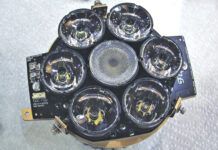

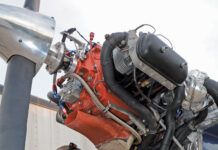


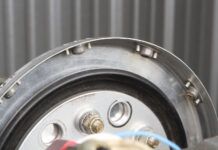
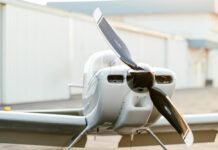

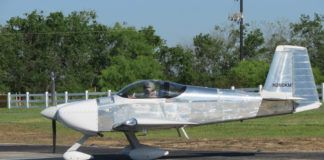
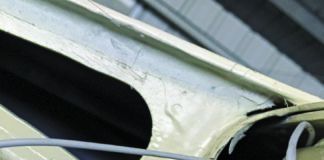


I recently went from a three-blade ground adjustable to a Prince P tip we’re just the same reasons the previously mentioned owner went with his fixed pitch. I have a Wittman Tailwind W8 with a 0-200 for power and even though I lost some Cruise speed I gained a lot in climb which for now I am satisfied with. Still, it performs reasonably close to the prototype were the 0-200 installed in that one.